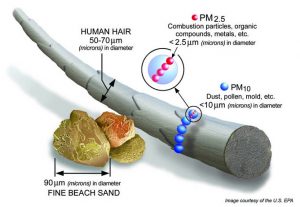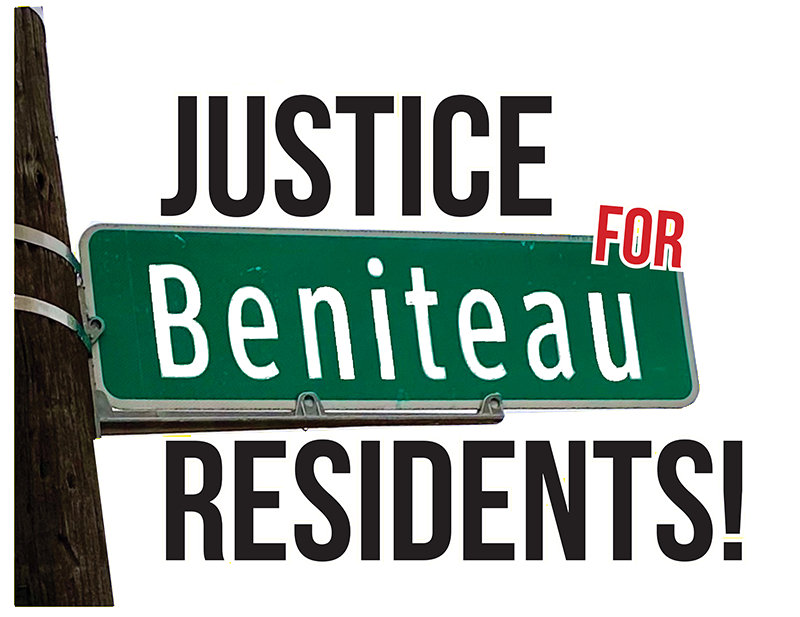In the last week we have been bombarded with local and national media citing how Black Americans are being more impacted by the coronavirus than others. This reflects our ongoing analysis of the impact of poverty and bad public policy on Majority Black Detroit. As we move through and beyond this crisis we will continue to center race and racial equity and the need to address root cause and effect systemic change. To this end we must advocate for meaningful and intentional relief for Detroiters who are most vulnerable and most impacted.
We must use COVID-19 relief funds to make homes safe to live in for Detroiters who are more at risk due to PM2.5* exposure and other environmental and social conditions.
For the last year residents in the “impact area” of the publicly funded Fiat Chrysler expansion project have been fighting for environmental and economic protections and have not been heard. Now, in the face of the coronavirus, these very residents have been identified as some of the most vulnerable in our city. We must demand that our elected officials advocate for COVID-19 relief funds be brought down to the block level and be used to protect their constituents. Please check the resources below and get ready to support our upcoming campaigns.
*What the #%& is PM2.5?
PM2.5 refers to atmospheric particulate matter (PM) that have a diameter of less than 2.5 micrometers, which is about 3% the diameter of a human hair.
Since they are so small and light, fine particles tend to stay longer in the air than heavier particles. This increases the chances of humans and animals inhaling them into the bodies. Owing to their minute size, particles smaller than 2.5 micrometers are able to bypass the nose and throat and penetrate deep into the lungs and some may even enter the circulatory system.
 Studies have found a close link between exposure to fine particles and premature death from heart and lung disease. Fine particles are also known to trigger or worsen chronic disease such as asthma, heart attack, bronchitis and other respiratory problems.
Studies have found a close link between exposure to fine particles and premature death from heart and lung disease. Fine particles are also known to trigger or worsen chronic disease such as asthma, heart attack, bronchitis and other respiratory problems.
Supporting Documents:
How vulnerable is your community to coronavirus? These new maps reveal a familiar pattern.
Jvion, a healthcare data firm, has collaborated with Microsoft to launch a new COVID-19 community vulnerability map to identify the populations most vulnerable to severe complications following a coronavirus outbreak. The interactive map aggregates socioeconomic and environmental factors, such as lack of access to transportation, exposure to toxins, unemployment, and mortality rate. According to the map, these factors make certain “cancer alley” communities particularly vulnerable.
“Our most heavily weighted and frequent determining risk factor was air quality, though that doesn’t mean that it’s the most predictive factor,” said John Showalter, chief product officer for Jvion. “There’s definitely a biologic rationale that environmental health hazards that lead to pulmonary and cardiovascular conditions would then lead people with those conditions to do poorly during a COVID-19 outbreak.”
COVID Community Vulnerability Map
This map allows you to search and drill down into communities to view populations most vulnerable for severe outcomes if infected with a COVID-like virus and the socioeconomic factors driving that risk.
Quick identification of those communities where individuals are at risk for experiencing severe outcomes once infected
Ability to plan allocation of resources to those communities predicted to require hospitalization and significant medical intervention
Reduction in bed utilization by the most at-risk population for morbidity/mortality as a result of proactive outreach
Understanding of top social determinants of health factors driving risk for those communities
COVID-19 PM2.5
A national study on long-term exposure to air pollution and COVID-19 mortality in the United States
Background: United States government scientists estimate that COVID-19 may kill between 100,000 and 240,000 Americans. The majority of the pre-existing conditions that increase the risk of death for COVID-19 are the same diseases that are affected by long-term exposure to air pollution. We investigate whether long-term average exposure to fine particulate matter (PM2.5) increases the risk of COVID-19 deaths in the United States.
Methods: Data was collected for approximately 3,000 counties in the United States (98% of the population) up to April 04, 2020. We fit zero-inflated negative binomial mixed models using county level COVID-19 deaths as the outcome and county level long-term average of PM2.5 as the exposure. We adjust by population size, hospital beds, number of individuals tested, weather, and socioeconomic and behavioral variables including, but not limited to obesity and smoking. We include a random intercept by state to account for potential correlation in counties within the same state.
Results: We found that an increase of only 1 μg/m3 in PM2.5 is associated with a 15% increase in the COVID-19 death rate, 95% confidence interval (CI) (5%, 25%). Results are statistically significant and robust to secondary and sensitivity analyses.
Conclusions: A small increase in long-term exposure to PM2.5 leads to a large increase in COVID-19 death rate, with the magnitude of increase 20 times that observed for PM2.5 and all-cause mortality. The study results underscore the importance of continuing to enforce existing air pollution regulations to protect human health both during and after the COVID-19 crisis. The data and code are publicly available.
